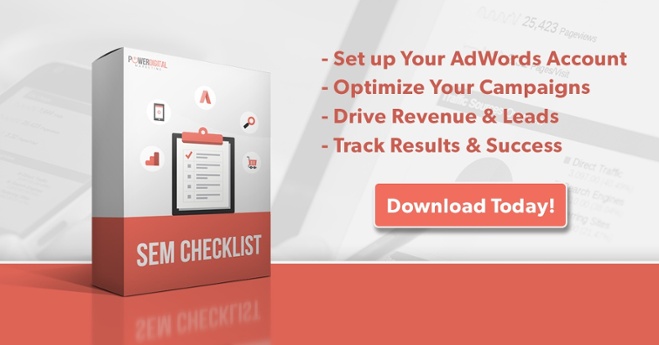E-commerce during the Holidays has produced record-breaking numbers year after year. And 2017 is no difference. There are more shoppers than ever online, and you better believe they are planning on getting a large portion of their holiday shopping done via the internet.
So let’s talk about all the paid media tools and tactics you’ll need to capture as much Holiday purchasing as possible during the months that matter most to an e-commerce business.
Forecasting
Before we get started, we’ll want to budget accordingly and also get a sense for how much volume is out there to capitalize on.
If available, prior year’s data should be the first reference when forecasting for the Holidays. Key in on the following with the help of your Google Analytics account:
- Seasonality Trends (what kind of traffic did your site receive during the Holiday?)
- Year over Year Fluctuations – Search Interest & CPCs (check in Google Trends as well)
- Return on Investment & Conversion Rates (to plan your budget accordingly)
It’s important to remember too that Black Friday is now a week long event. So plan accordingly. Also, some things you’ll want to keep a close eye on during the Holidays:
- Search impression share
- Impression share lost
- Average Position
- Average Cost per Clicks
- Auction Insights Report (to track competition)
Ad Copy
By the time the Holidays come around you should have a really good idea of what works and what doesn’t in terms of generating higher click through rates/conversion rates. With those learnings in mind, you’ll also what to advertise your deals/sales. So try and use a combination of calling out those deals and the proven ad copy you’ve been using all year.
Related: How to Craft PPC Landing Pages to Rank Better in the Ad Auction
Somethings you’ll also want to use (if you’re not already) are IF statements and COUNTDOWN scripts within your ad copy. With these formulas you can dynamically control what people are seeing with your ads.
The COUNTDOWN script essentially displays how many days are left in a sale:

All you’ll need to do to set this up is write {=COUNTDOWN(”the date your sale ends”,”en-US”,4)}. The en-US represents the language the ad will use (english in this case) and the 4 represents the number of days before the sale the ad will start showing.
IF Statements are also easily applied:

If you write the following formula in your Ad: {=IF(device=mobile,Shop From Your Phone):Shop Healthy} then your ad will read “Shop From Your Phone” when viewed from a mobile Device, and “Shop Healthy” from a Computer/Desktop. It’s important to note that the same character limits do apply here, so check the lengths before you upload.
Keyword Coverage
Brainstorming keyword combinations for both Brand and Non Brand (depending on budget) keywords can have a very positive impact on sales. It’s also worth noting that Non Brand terms can be extremely competitive and costly, especially during the holidays. Adding modifiers like “holiday sale” or “cyber monday sale” to your pre-existing keyword list can be a great way to capture a super interested audience at a cheaper cost. You’ll also want to pay close attention to your existing Broad, BMM or phrase match keywords for potential mining opportunities for relevant search terms.
If you’re running an e-comm business, there’s also a good chance that you’re running Product Listing Ads (PLA’s) as well. I can’t stress enough how important it is, especially now, to make sure your Product Feed and Merchant Center are error-free. We’ve seen Google disapprove entire, multi-thousand product feeds due to a handful of products having minor issues. Since late 2016, Google has been extra sensitive to issues with PLA feeds and we’ve had many, many issues ensuring that product feeds stay active.
On the subject of PLA’s, one thing to also consider is adding verbiage around Holiday Sales into your feed descriptions. PLA’s essentially work by reading your product feed to dictate what search terms they’re eligible to show ads for (sort of like a website and Organic Search, only with a Product Feed and a bid). So if you add Holiday Sale verbiage into your titles, you can essentially add new “keywords” to help your PLA’s show for terms like “holiday shoe sale”.








